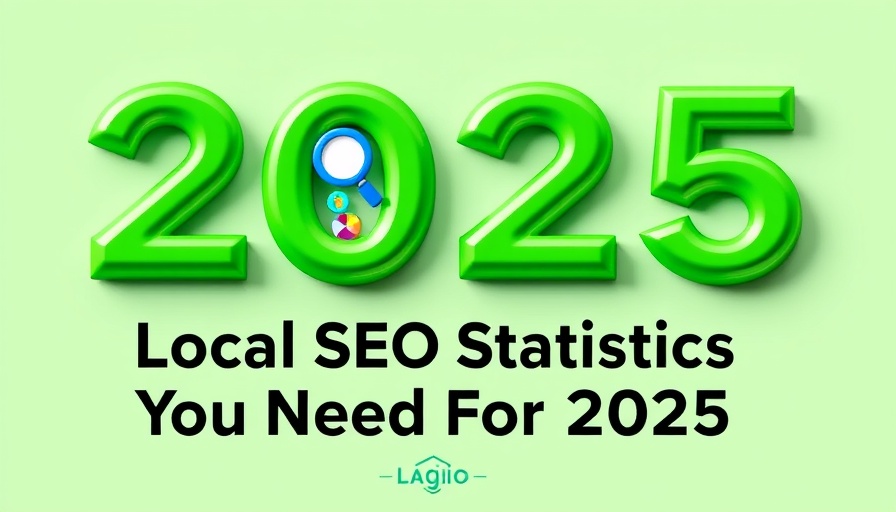
The Importance of Local SEO in 2025
As we move into 2025, local SEO remains a cornerstone of online marketing, particularly for small and medium-sized businesses (SMBs). In an increasingly digital world, capturing the attention of local consumers who are ready to make purchases is essential. With statistics indicating that 80% of US consumers search online for local businesses weekly, ensuring that your business is easily discoverable online can significantly influence your foot traffic and sales.
Understanding Local Search Behavior
It’s critical to comprehend how local consumers search for businesses. Recent statistics show that 46% of all search queries have local intent, a figure backed by various studies over the years. For SMBs, understanding this behavior is crucial in tailoring marketing strategies that resonate with local consumers. Furthermore, a staggering 61% of consumers rely on business information sites to gather insights about new businesses, reinforcing the need for accurate and readily available information online.
Utilizing Google My Business for Optimization
One of the most potent tools for local SEO is Google My Business (GMB). Optimizing your GMB listing can dramatically enhance your local search visibility. According to a recent report, 42% of searchers click on Google map pack results for local queries. Therefore, engaging with customers through your GMB profile by updating business information, responding to reviews, and posting updates can significantly impact your visibility in local search results.
Key Local SEO Statistics to Drive Your Strategy
Staying informed about crucial statistics can inform and refine your marketing strategies. For instance, 67% of 18- to 24-year-olds utilize Instagram for finding local businesses, showcasing the shift toward social media platforms for local discovery. Additionally, a recent Local Business Discovery and Trust report indicates that 62% of consumers would avoid businesses with incorrect online information.
Local Search Ranking Factors: What to Focus On
When strategizing your local SEO efforts, it’s essential to prioritize key ranking factors. Google considers various elements when listing local businesses, such as proximity, relevance, and prominence. Regularly optimizing your website for local keywords, incorporating meaningful content related to your local community, and ensuring consistent NAP (Name, Address, Phone number) information across all platforms can positively impact your ranking.
Tools and Resources for Local SEO Success
Utilizing the right tools can make a significant difference in your local SEO success. For example, using tools like Moz Local and BrightLocal can help streamline your local citation building process, ensuring that your business is listed accurately across various directories. These tools also offer insights into how your competitors are performing, allowing you to refine your tactics effectively.
Common Misconceptions about Local SEO
Many SMB owners still believe that investing in local SEO is unnecessary, but this couldn’t be further from the truth. With local searches on the rise, neglecting this aspect can lead to missed opportunities for growth. Understanding that local SEO is not merely an optional strategy but a crucial business driver can change how SMBs approach their marketing efforts.
A Call to Action: Take Charge of Your Local SEO
For SMBs seeking to thrive in 2025 and beyond, leveraging local SEO is non-negotiable. By employing effective strategies such as Google My Business optimization, you can improve your search visibility and ultimately drive more foot traffic to your business. Now is the time to analyze your current local SEO efforts, implement changes where needed, and watch your business grow!
 Add Row
Add Row  Add
Add 




Write A Comment